Basil is a common plant that you can grow right in your own home. You may be wondering if basil can survive the winter. It all depends on where you live! Generally speaking, this herb doesn’t do well in temperatures under 40 degrees.
Here are some handy tips to help you keep your basil happy and healthy until spring temperatures roll around.
1. Keep It Indoors
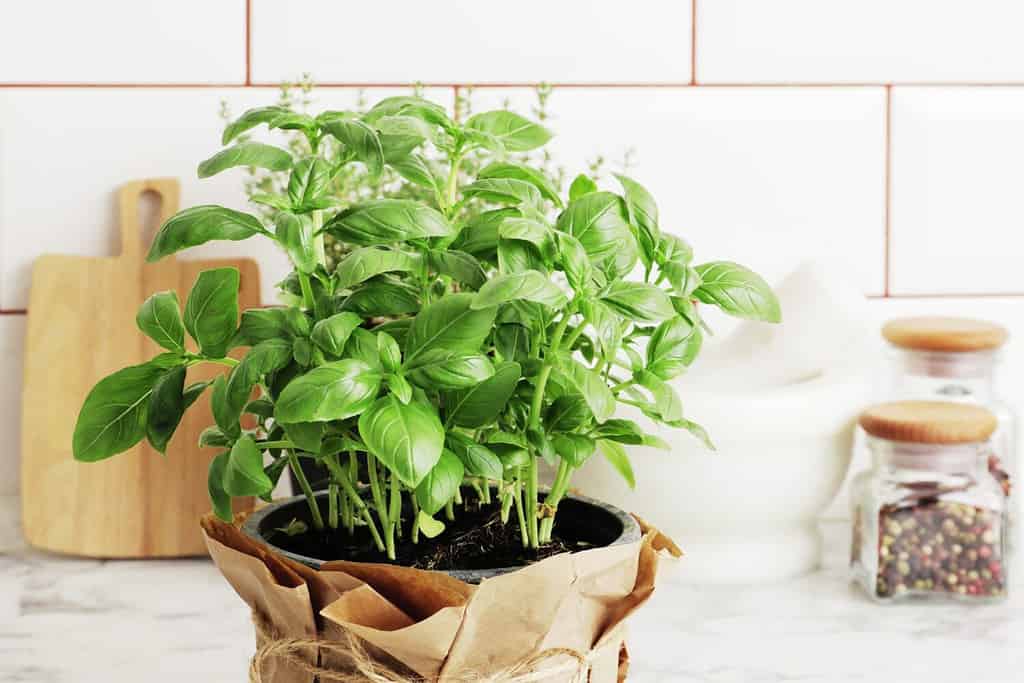
There are at-home kits to make growing basil a breeze.
©PandaStudio/Shutterstock.com
This flavorful herb will likely need to be kept indoors throughout the chilly winter months. You can either bring it in from your garden or start from seeds indoors. Because basil needs moist soil, it’s essential to keep it in an area that isn’t too drafty.
If you’re starting without a plant, it’s advised to begin with a small basil plant. The shorter and smaller it is, the more likely it is to survive through the winter. When you go to the store or nursery and see tall basil plants, it can be a sign that they weren’t harvested the right way.
2. Proper Planter
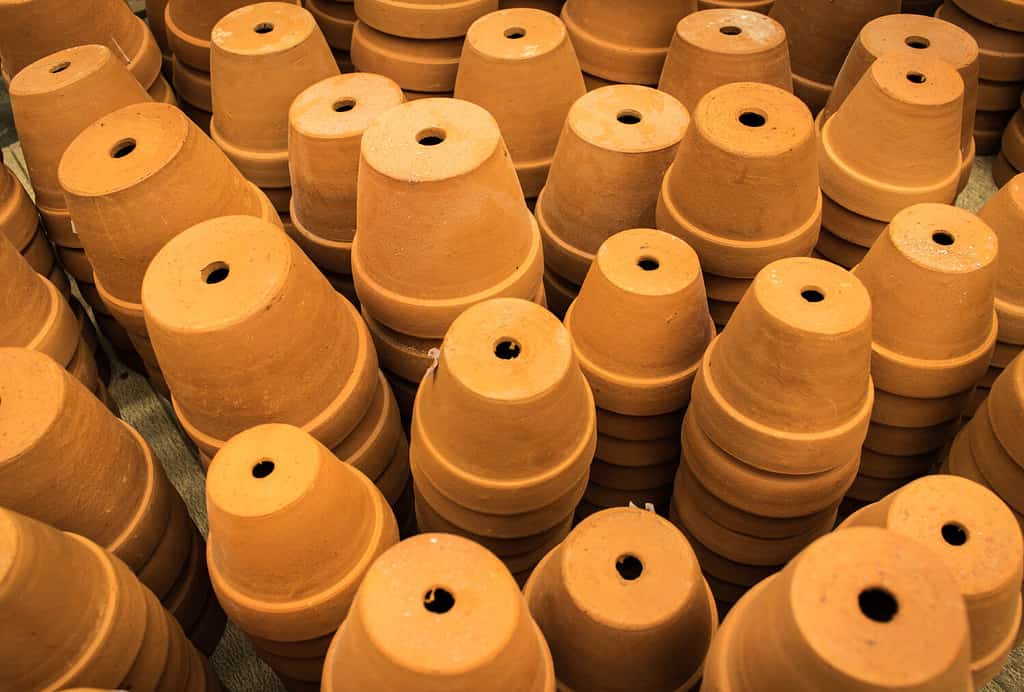
The more drainage holes a container has, the better chance basil survives winter.
©Zulashai/Shutterstock.com
It’s important to use a large pot, despite starting with a small plant. A big pot or container gives the herb plenty of room to grow. This also provides basil with enough soil. In a smaller pot, the soil dries up faster, which can result in dehydration.
The right planter will have plenty of drainage holes as well. The last thing you want is for basil to get root rot. This can make it hard to stay alive, no matter what the weather is like outdoors.
3. Create a Harvesting Schedule
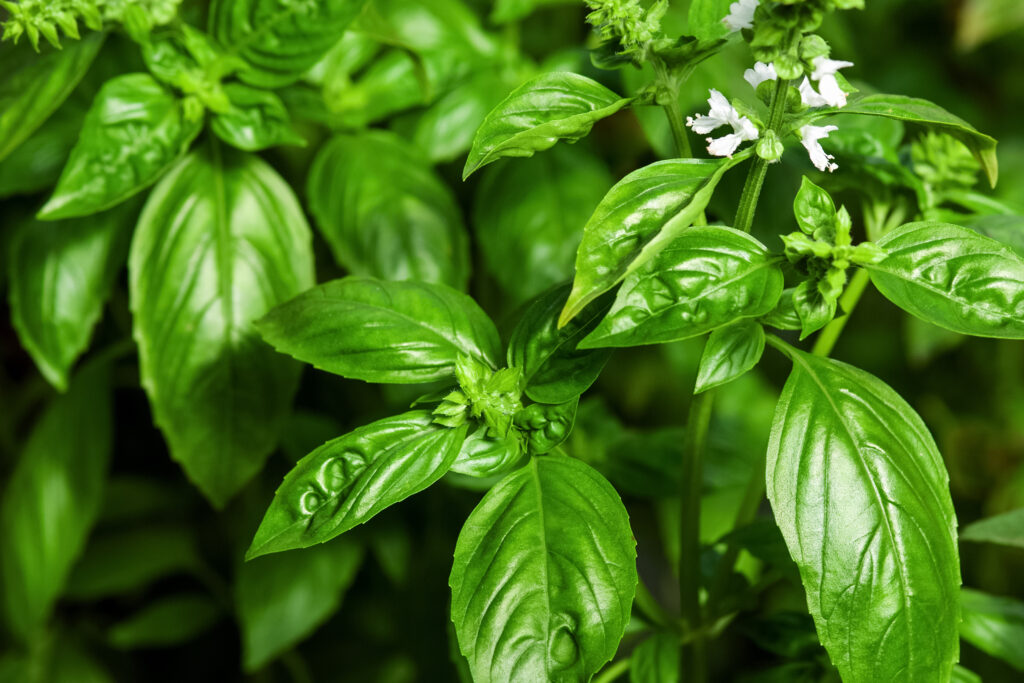
This herb should be harvested early and often.
©Nadya So/Shutterstock.com
Once your basil starts to grow, don’t wait to harvest the glossy foliage for your favorite dishes. It’s in your best interest to create a harvesting schedule to encourage the plant to grow more leaves.
The more room on stems that the plant has available for new growth, the more it can yield. There isn’t a certain amount of basil you need to wait for to start harvesting. Even if there aren’t many pieces at first, begin the harvest process to encourage your basil plant to grow!
How do you harvest basil? Once you see new leaf growth take sharp scissors and cub about ½ inch above the growth.
4. Feed Your Basil Plant
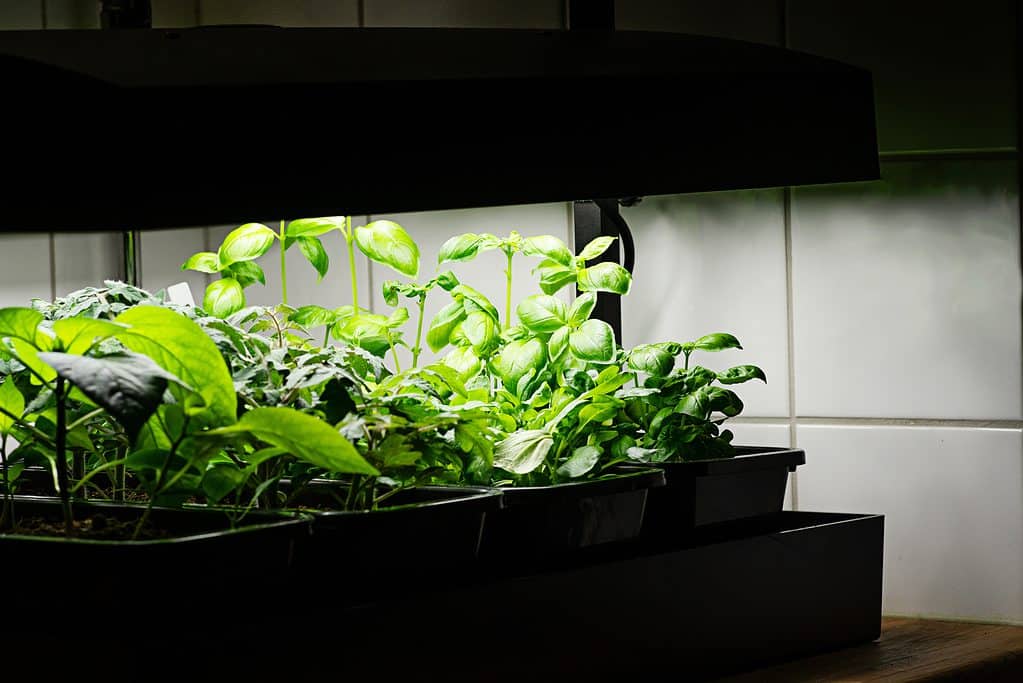
Fertilizer is a great and easy way to provide basil with all the nutrients it needs.
©Susie Hedberg/Shutterstock.com
Without the natural nutrients that basil may find by being planted outdoors, it’s important to supplement nutrients to have a healthy plant. Plants can struggle to grow and can even die without the proper food.
Take organic fertilizer feed and mix it into the soil about once a month. You’ll start to notice the leaves become a darker green when the basil is consuming the food.
5. Provide a Warm Environment
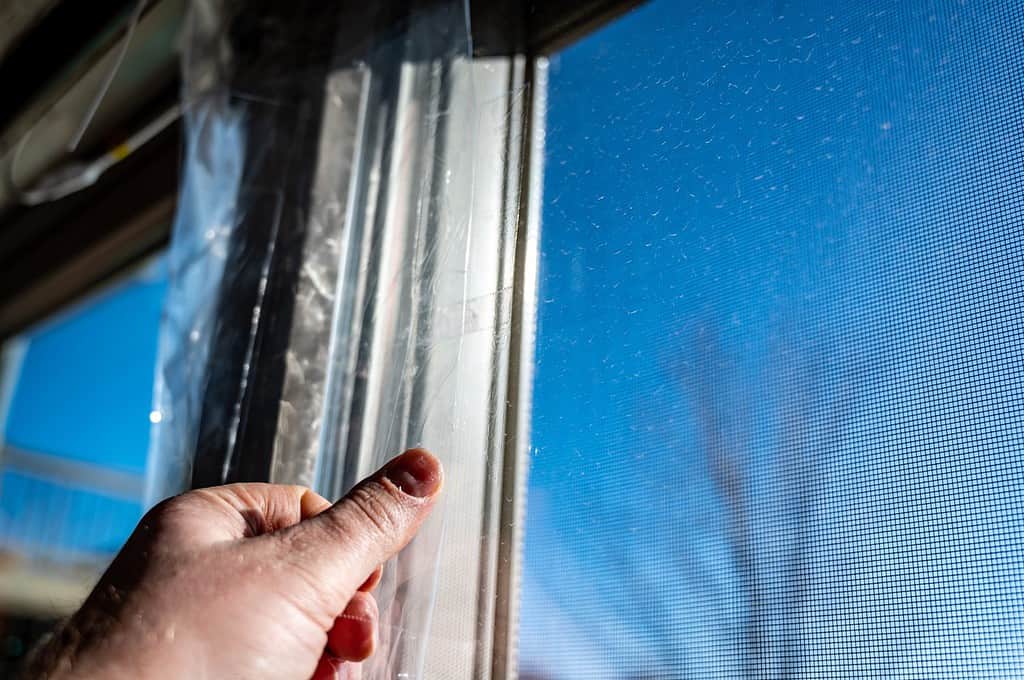
Winterize windows in rooms where you place basil to help them thrive.
©Lost_in_the_Midwest/Shutterstock.com
Even though you have this plant indoors to help it survive the winter, it should still be in a warm area. Find the room with the most natural sunlight and place your plant there. Basil needs roughly eight hours of full sun a day!
This herb also dislikes cold temperatures. Keep it away from windows in the window, as this can be slightly colder than other areas in a room. If the plant is too cold you may notice the leaves turning black.
6. Consider Companion Planting
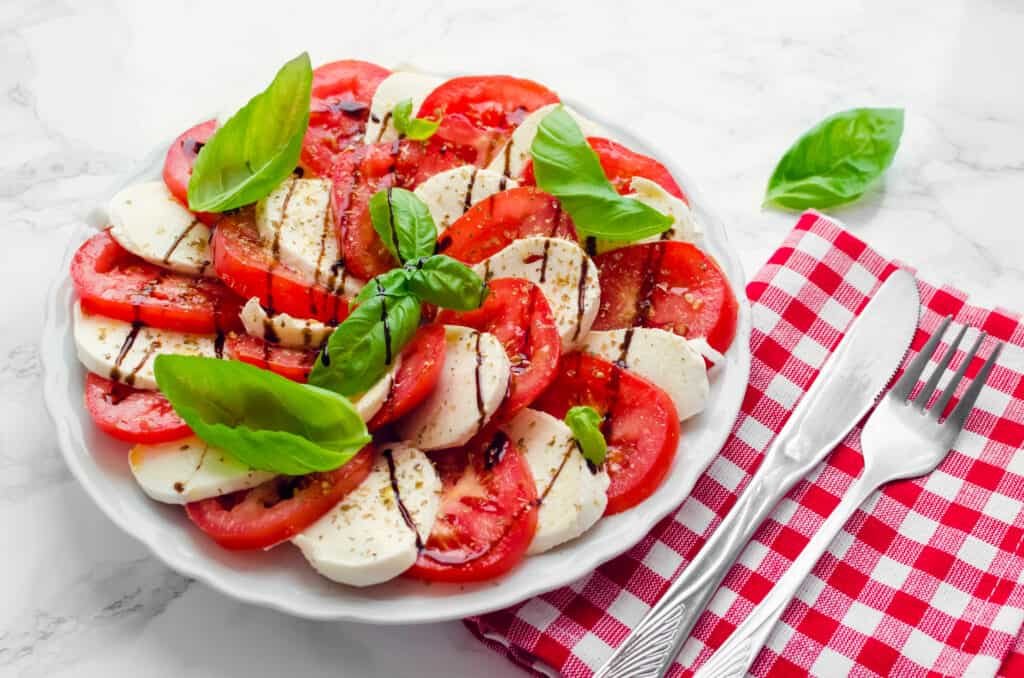
Basil and tomatoes grow well together and are in many dishes with tasty cheeses.
©Nelli Syrotynska/Shutterstock.com
Many plants can thrive in winter with the help of other plants. Basil has a number of companion plants that not only help it grow but taste well alongside it. Some even say planting basil alongside tomatoes can improve the taste of both plants!
We suggest peppers, oregano, lettuce, and tomatoes as companion plants for basil.
7. Prevent Wilting
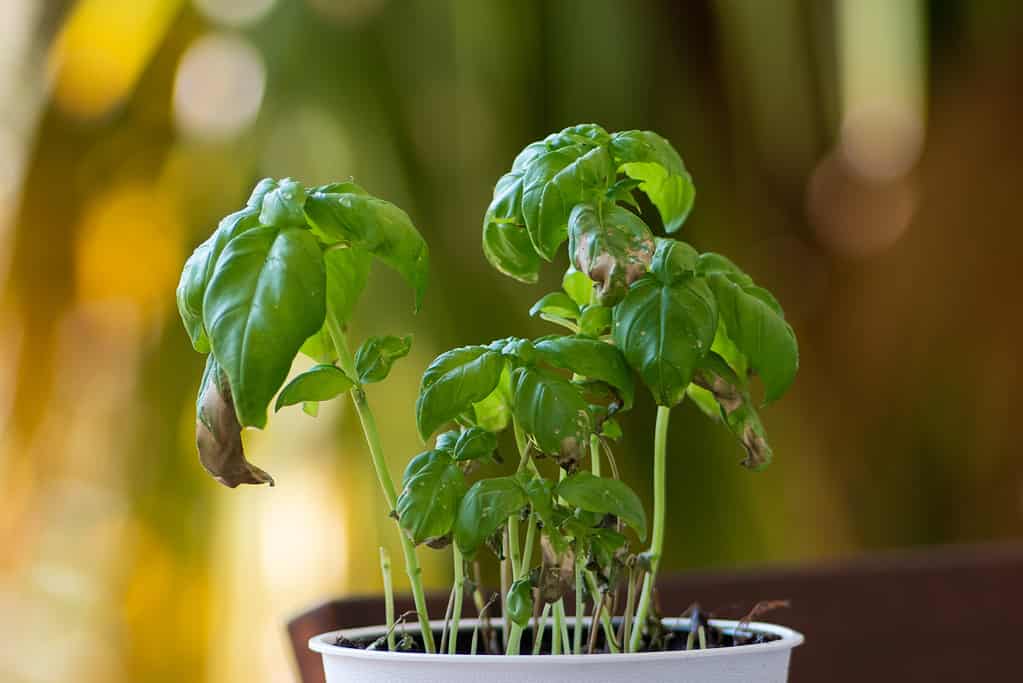
Stress and watering are the main reasons basil wilts.
©Octavian Lazar/ via Getty Images
To help basil survive the winter you may have brought a plant from your outdoor garden inside. Sometimes this can cause pretty extreme wilting leading to the top of the plant toppling over.
This is a sign the basil needs some time to adjust to the change in environment. Upon bringing basil inside, give it a couple of hours of sunlight a day instead of the full eight hours. Over the course of a few weeks, increase the amount of sunlight the plant receives until you’re up to the eight-hour mark!
8. Keep Backup Basil
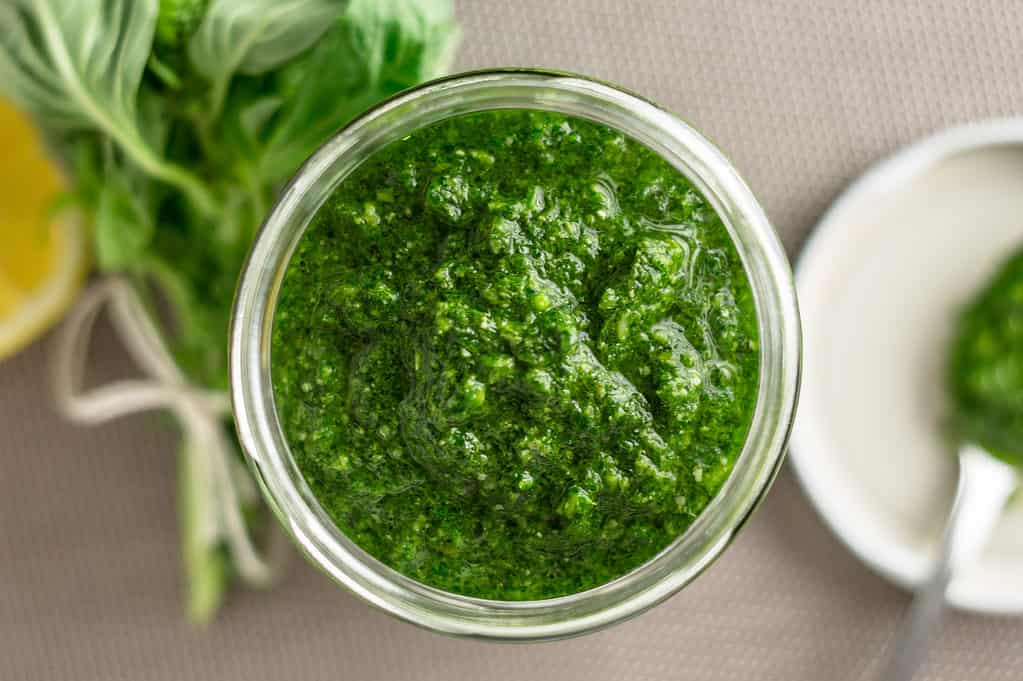
You can add basil to sauces to help use up any extra you may have around. It also works great in a simmer pot.
©iStock.com/Louno_M
Now that you know just about every way to help basil survive the winter, don’t let any go to waste. If you stick to your harvesting schedule, you may notice that you have more basil than you know what to do with.
Freezing it is a great way to preserve it long-term. You can also dry it out or blend it and use it to lightly season dishes throughout the year.
The photo featured at the top of this post is © Zbynek Pospisil/ via Getty Images
Thank you for reading! Have some feedback for us? Contact the AZ Animals editorial team.







